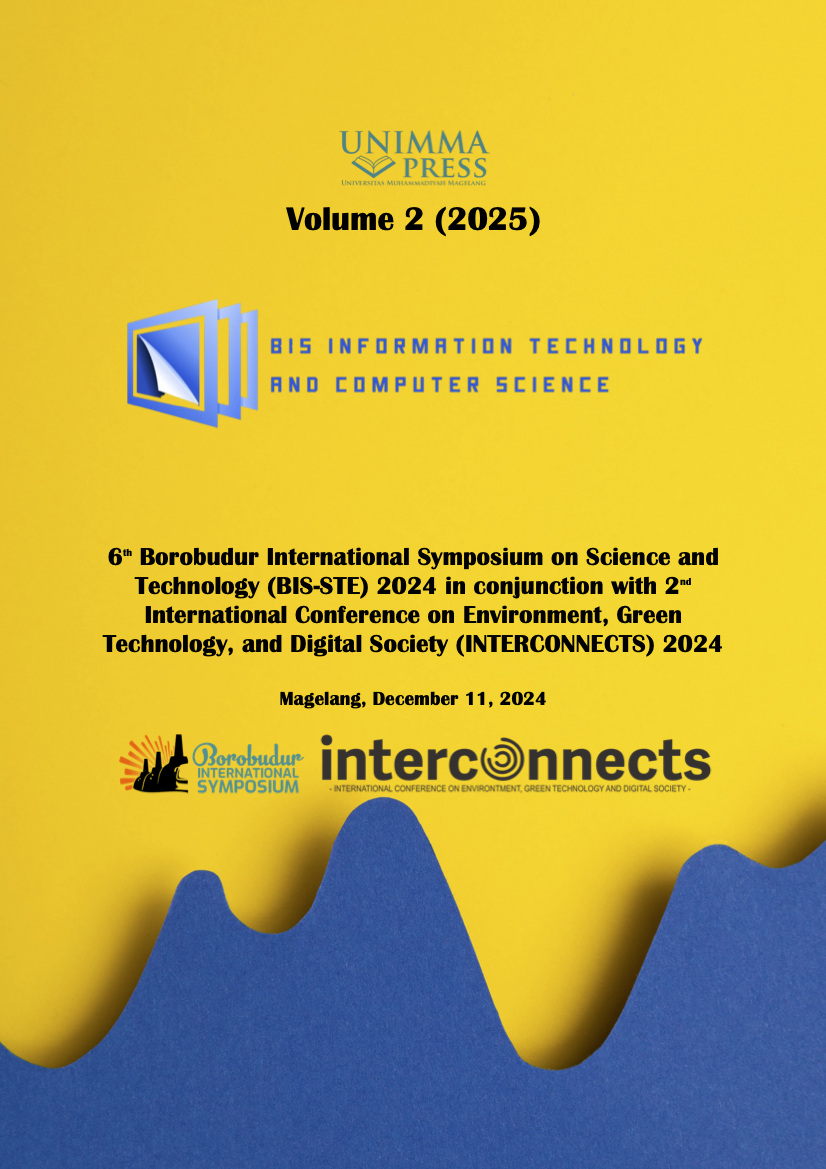Conceptual model proposal for integration of consortium e-learning using SOA architecture: A literature-based approach
Keywords:
E-learning integration, SOA, ConsortiumAbstract
The increasing demand for online learning (e-learning) is critical to supporting modern education, which faces the challenge of providing relevant, flexible, and affordable education. In addition, one of the innovations in organizing learning programs is Collaboration between universities in a consortium that raises the need for support for technology integration. Service-Oriented Architecture (SOA) supports interoperability, flexibility, and scalability in integrating this consortium’s e-learning system. However, differences in technology standards, data management, and service sustainability are challenges. Comprehensive research is needed to design an integration model that can be adopted and become a practical guide in creating an integrated, adaptive, and forward-looking learning ecosystem. The research method will use two steps. The first starts with a literature study using scientific articles related to e-learning, SOA, and Collaboration. The second is the model’s design, preceded by identifying the consortium's needs, the leading SOA services, and a simple architecture diagram to visualize integration. The results are in the form of conceptual and exploratory models in the form of new model designs, identification of trends, existing needs and problems, and theoretical contributions that can be used by researchers and practitioners that can be developed into other research.
References
[1] A. N. Fajar, A. Nurcahyo, and S. R. Sriratnasari, “SOA System Architecture for Interconected Modern Higher Education in Indonesia,” in Procedia Computer Science, Elsevier B.V., 2018, pp. 354–360. doi: 10.1016/j.procs.2018.08.184.
[2] A. N. Fajar and N. Legowo, “Services Modeling based on SOA and BPM for Information System Flexibility Improvement,” International Journal of Electrical and Computer Engineering (IJECE), vol. 8, no. 4, p. 2451, Aug. 2018, doi: 10.11591/ijece.v8i4.pp2451-2455.
[3] Y. Hou, P. Joyce, K. Thurmaier, and K. Willoughby, “Training future professors in public budgeting, finance, and financial management: The Inter-University Consortium for PhD courses,” Journal of Public Affairs Education, vol. 30, no. 3, pp. 375–394, Jul. 2024, doi: 10.1080/15236803.2023.2272654.
[4] A. Pina Stranger, G. Varas, and G. Mobuchon, “Managing Inter-University Digital Collaboration from a Bottom-Up Approach: Lessons from Organizational, Pedagogical, and Technological Dimensions,” Sustainability, vol. 15, no. 18, p. 13470, Sep. 2023, doi: 10.3390/su151813470.
[5] M. Pendidikan, D. A. N. Kebudayaan, and R. Indonesia, “PERMENDIKBUD No.3 tahun 2020,” 2020.
[6] KEMENDIKBUD, PERMENDIKBUD No.3 tahun 2020. 2020.
[7] Kemendikbud and M. Tohir, “Buku Panduan Merdeka Belajar - Kampus Merdeka,” Jul. 13, 2020, OSF Preprints. doi: 10.31219/osf.io/ujmte.
[8] Amazon Web Services (AWS), “What is SOA (Service-Oriented Architecture),” Amazon Web Services. Accessed: Jan. 21, 2025. [Online]. Available: https://aws.amazon.com/what-is/service-oriented-architecture/?nc1=h_ls
[9] R. Blal, A. Leshob, H. Mili, I. Benzarti, P. Hadaya, and R. Rab, “SOA Services Identification and Design Methods From Business Models: A Systematic Literature Review,” IEEE Access, vol. 13, pp. 9879–9901, 2025, doi: 10.1109/ACCESS.2025.3528297.
[10] R. P. Díaz Redondo, M. Caeiro Rodríguez, J. J. López Escobar, and A. Fernández Vilas, “Integrating micro-learning content in traditional e-learning platforms,” Multimed Tools Appl, vol. 80, no. 2, pp. 3121–3151, Jan. 2021, doi: 10.1007/s11042-020-09523-z.
[11] A. Al-Hunaiyyan, S. Al-Sharhan, R. Alhajri, and A. Bimba, “An Integrated Implementation Framework for an Efficient Transformation to Online Education,” International Journal of Advanced Computer Science and Applications, vol. 12, no. 4, pp. 52–61, 2021, doi: 10.14569/IJACSA.2021.0120408.
[12] A. P. Astutik, Buku Ajar Al-Islam Dan Kemuhammadiyahan – 4 (AIK - 4). 2017. doi: 10.21070/2017/978-979-3401-78-2.
[13] A. P. Astutik and Mu’adz, Buku Ajar AIK Al-Islam & Kemuhammadiyaan 4 Islam dan Ilmu Pengetahuan. 2018.
[14] N. S. Fitriasari, D. I. Sensuse, D. S. Hidayat, and E. H. Purwaningsih, “A Systematic Literature Review on University Collaboration in Open Innovation: Trends, Technologies, and Frameworks,” Electronic Journal of Knowledge Management, vol. 22, no. 1, pp. 40 – 57, 2024, doi: 10.34190/ejkm.22.1.3407.
Downloads
Published
Conference Proceedings Volume
Section
License

This work is licensed under a Creative Commons Attribution-NonCommercial 4.0 International License.

